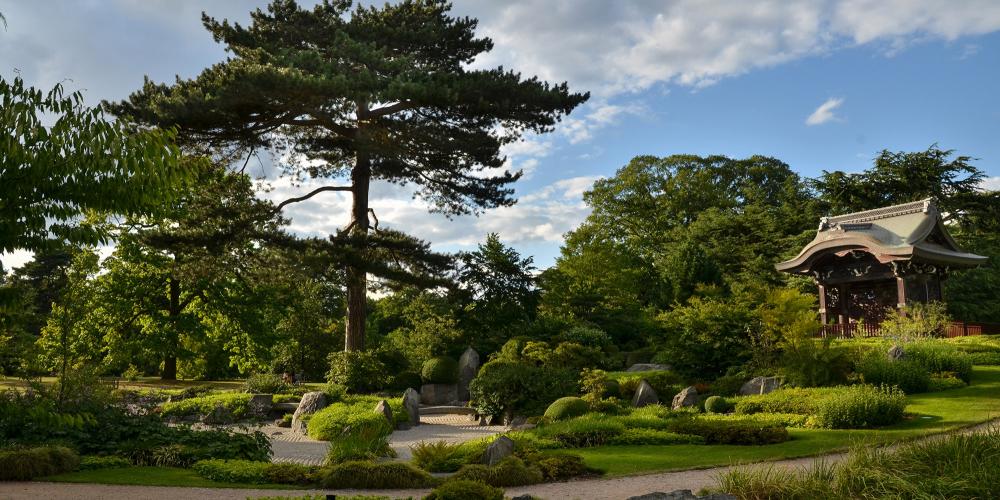The Great Pagoda

It is a ten-storey octagon tower, standing at almost 50m and each level is 30cm narrower than the one below. It offered one of the earliest and finest bird’s eye views of London. At the time of its construction it was considered so unusual that people were unconvinced it would remain standing.
Chambers studied oriental architecture in China, but when he designed Kew’s pagoda he ignored the rules. Pagodas should have an odd number of floors, traditionally seven (rather than ten), believed to represent seven steps to heaven.
The Great Pagoda was the most accurate reconstruction of a Chinese building in Europe at the time. It was originally flanked by a Moorish Alhambra and a Turkish Mosque, follies that were all the rage in the great gardens of the time.
During the Second World War, British bomb designers wanted to study their latest inventions in flight. They made holes in each floor of the pagoda and dropped bombs down in secret to test their inventions.
It underwent a major restoration,completed in July 2018. This restored the folly to its former glory, including the re-introduction of 80 dragons – one on each corner of each storey.

